The birthstone for January
Perhaps best known for its deep red tones, garnet occurs in a variety of other colours, including violet, pink, orange, yellow, green, brown, black, a rare blue, and even some gems that can change colours as well as offer beautiful star effects. This versatility and the gem’s symbolism of love and happiness make garnet the perfect Birthstone for January.
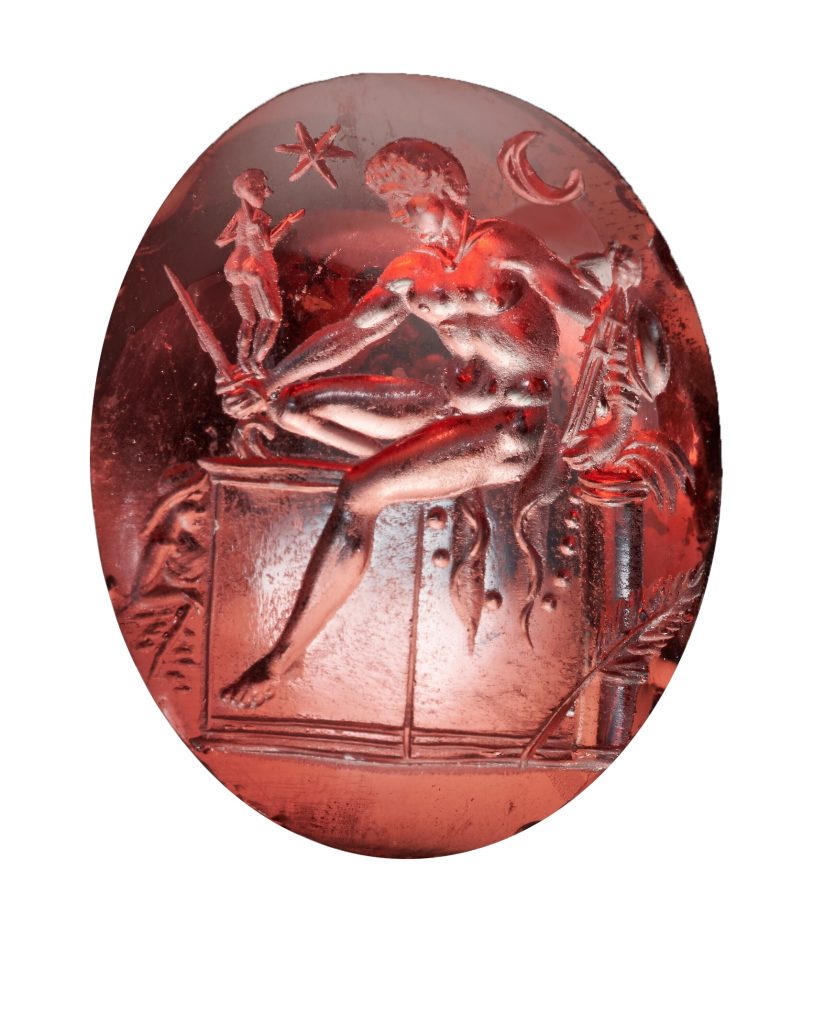
1/11 Garnets have been used since antiquity. Shown here is a carved Roman garnet ring stone depicting Diomedes, of the Imperial Period, circa late 1st century BCE to 1st century CE. It sold at a Christie’s auction in April 2022 for USD 56,700. (Photo: Christie’s)
Garnets have been used for millennia in jewellery and decorative objects. The early Egyptians considered garnet to be a symbol of life, and necklaces and talismans made with the gem have been discovered in their tombs, dating back to 3100 BCE. In the third and fourth centuries, the Romans and Greeks carved garnet for cameos and intaglios, and used garnet signet rings to seal documents, according to Ioannis Alexandris, CEO of Gemolithos, a Munich-based antique jewellery and gem dealer. Saxon and Celtic kings believed that garnet would protect their wearers.

2/11 Antique hessonite garnet and old European-cut diamonds in gold, circa 1840s, courtesy of Gemolithos. (Photo: Ioannis Alexandris)
After its discovery around 1500 CE in the former kingdom of Bohemia, the red pyrope form of garnet became quite popular and was used to adorn garments worn by royalty, including Mary Queen of Scots, Russian Czarinas, and later Queen Victoria. After the Victorian era, garnet jewellery fell out of fashion, although the versatile gems and their myriad colours found new interest and appreciation in the 20th and 21st centuries.
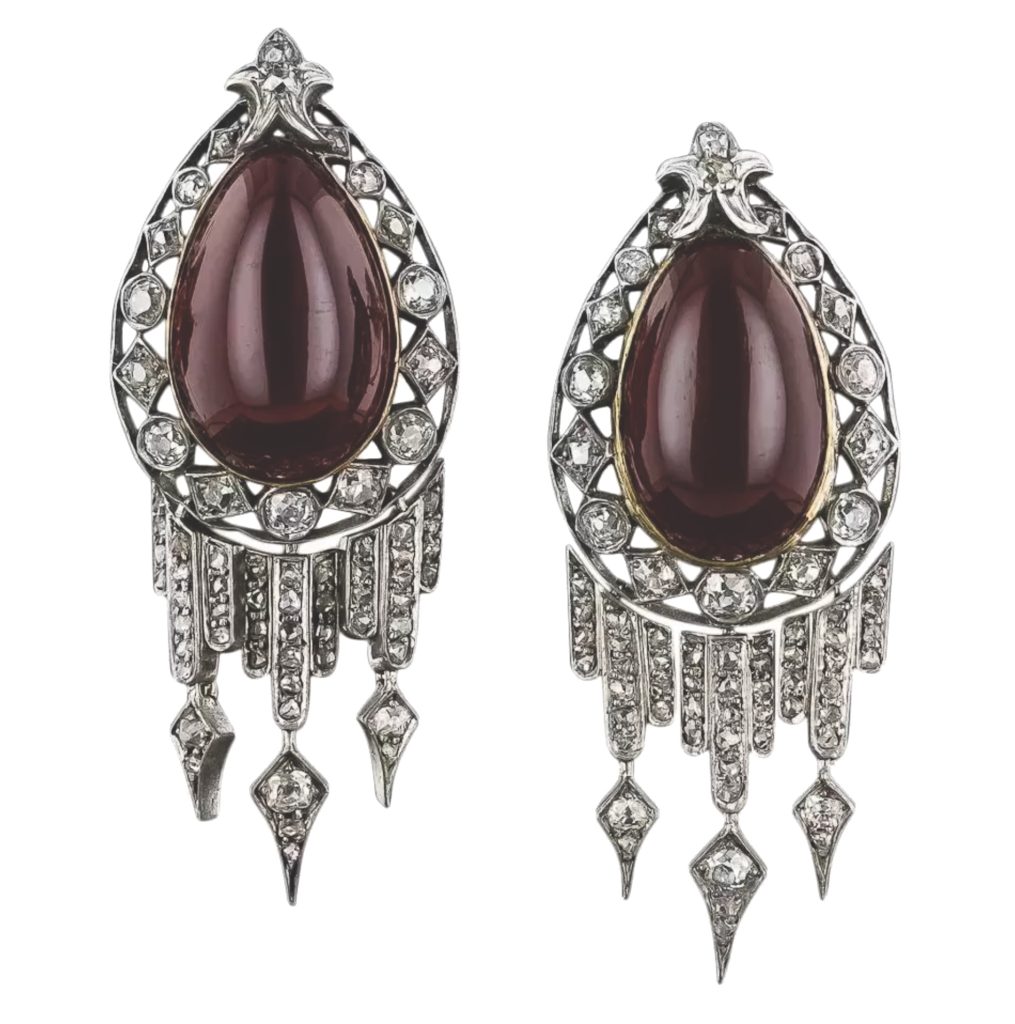
3/11 Victorian garnet, old-mine and rose-cut diamonds, circa mid-to-late 19th century set in silver and 10K white gold, courtesy of Lang Antiques. (Photo: Lang Antiques)
The origin of the term “garnet” comes from the Latin “granatus” meaning seed or grain, likely in reference to the seeds of the pomegranate fruit. Durable with a hardness of 7 to 7.5 on the Mohs Scale, a high refractive index, and one of the few untreated gems all make it a particularly attractive stone for jewellery.
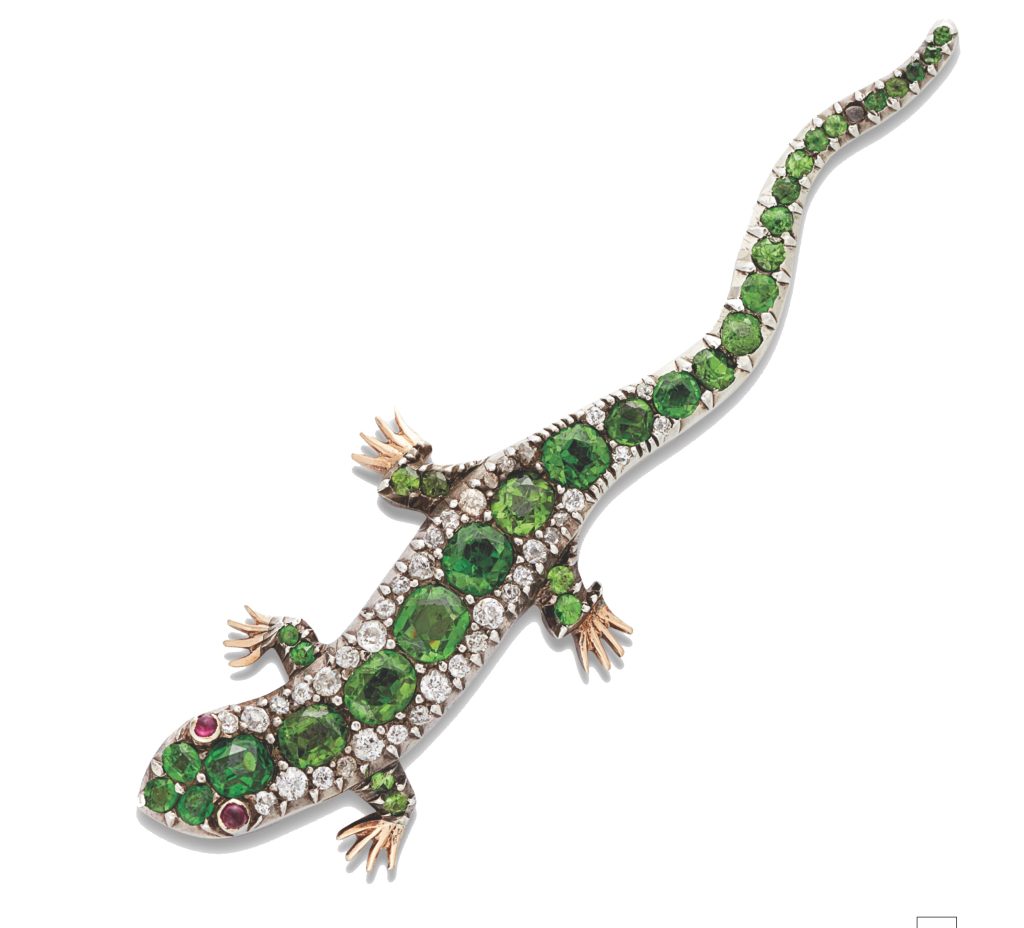
4/11 Antique salamander brooch featuring demantoid garnets, rubies, and diamonds in silver and gold, circa 1900. It sold for GBP 8,750 in July 2020 at a Christie’s auction. (Photo: Christie’s)
One of Nature’s most complex gem species, garnet is—according to the Gemmological Institute of America (GIA)—a family of twenty related species of gemstones with a similar chemical structure. Of these species, six are the most well-known—pyrope, almandine, spessartine, grossular, andradite, and uvarovite. GIA notes that many garnets are a mixture of two or more species.

5/11 Chart depicting the end member compositions of the six main garnet mineral species or groups by Lina Jakaitė (https://strike-dip.com/, CC BY 4.0). Many types of garnets are a blend of two or more mineral groups or species. (Photo: commons.wikimedia.org)
Deposits of the gem are found around the world, with most coming from Africa, Brazil, Europe, India, Madagascar, Pakistan, Russia, and the USA. While red garnet is the most abundant, other spectacular colours are specific to various regions.
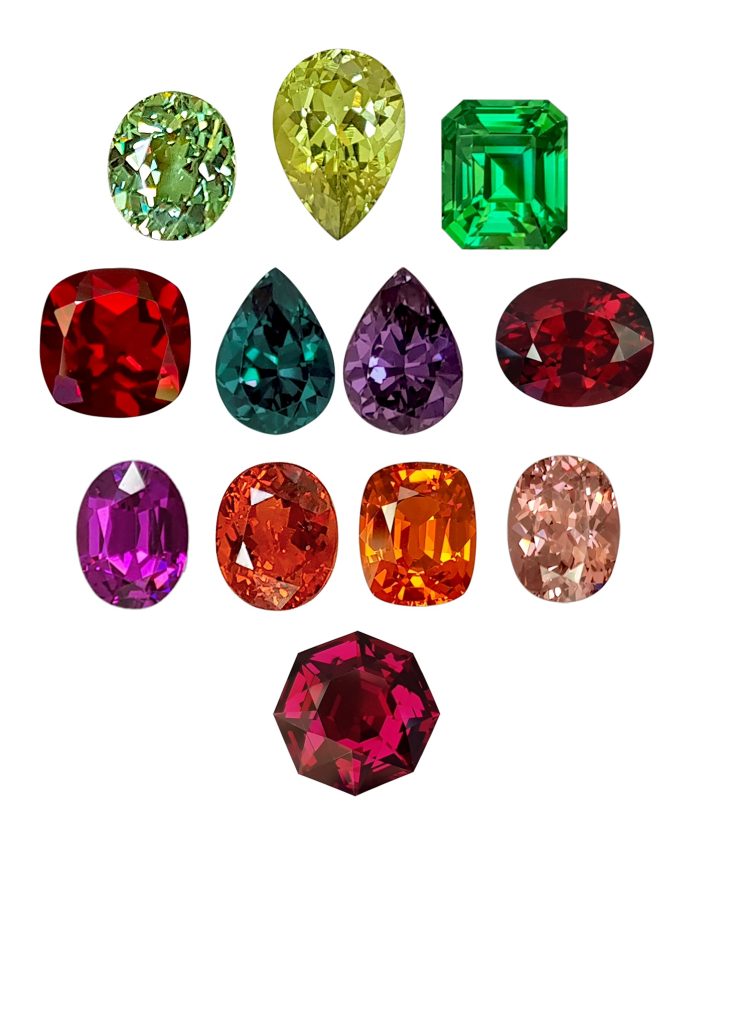
6/11 Selection of garnets offered by Hamid Bros. Left to right: demantoid (andradite); Mali (blend of grossular-andradite); tsavorite (grossular), colour-change (blue-green and violet, blend of spessartine-grossular-pyrope) (Photos: Hamid Bros)
“Garnet is perennially popular,” says Grant Hamid, owner of Melbourne-based Hamid Bros Pty Ltd. “Its many varieties and colours make it one of the most versatile gemstones on the market. From the rare, vibrant green tsavorite garnet to the common almandine or pyrope, garnet also fits an extremely wide range of budgets as well as tastes. No garnets are heat treated and no other enhancements or synthetics are known at present.” Hamid sources garnets from several places, noting that some varieties such as tsavorite, Mali, and Malaia garnets are mined in particular locations in Africa, while an unusual purple rhodolite comes from Mozambique.
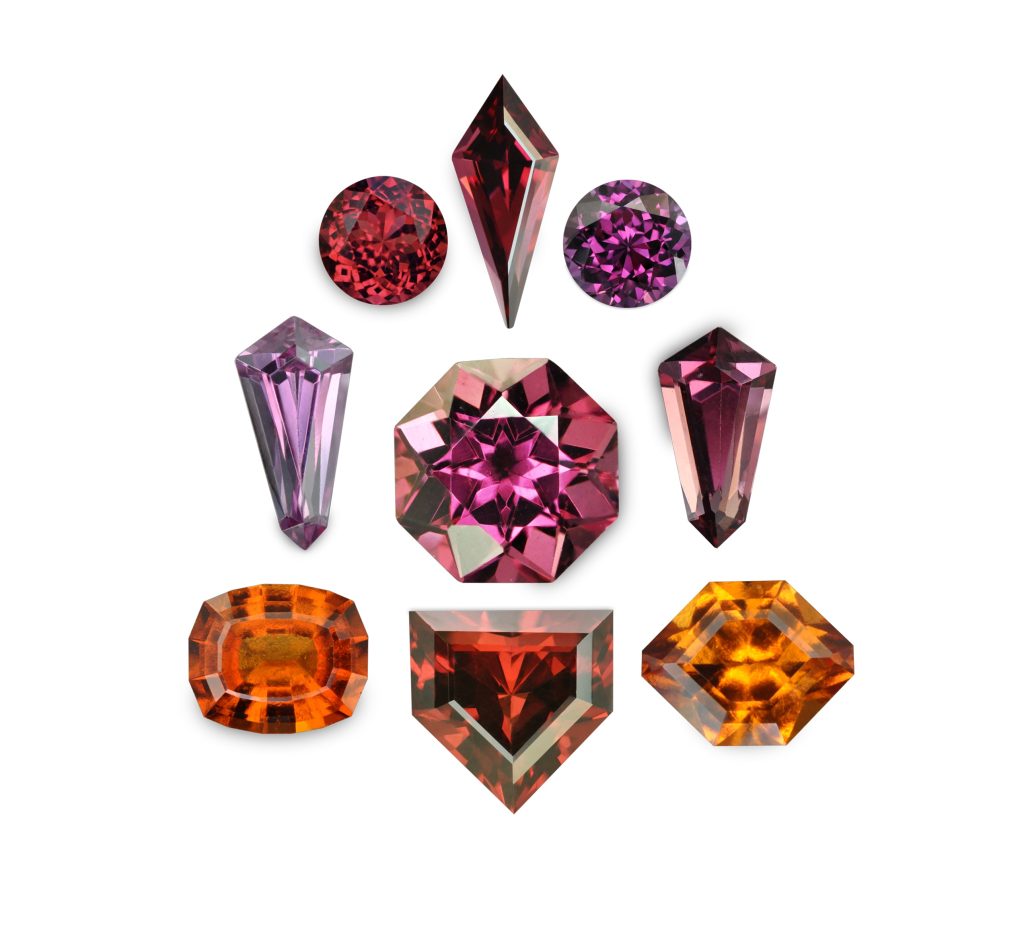
7/11 A selection of specialty fancy-cut garnets, in sizes from 0.60ct to 1.95ct, by The Gem Monarchy. The red gems are pyrope, the pinkish are rhodolite, and the orangey ones are hessonite. (Photos: The Gem Monarchy)
“For us, the most popular garnets are the pyrope red variety,” explains Punala Kiripitige, founder of The Gem Monarchy, Kensington Park, SA, adding that the green tsavorites are now trending in the international market although they are now almost twenty times as expensive as a red pyrope garnet. Whatever the colour, Kiripitige adds that the company specialises in fancy-cut garnets, which sell better than traditional cuts. “We source garnets primarily from Mozambique and a few different countries in the African continent, as well as Sri Lanka.”
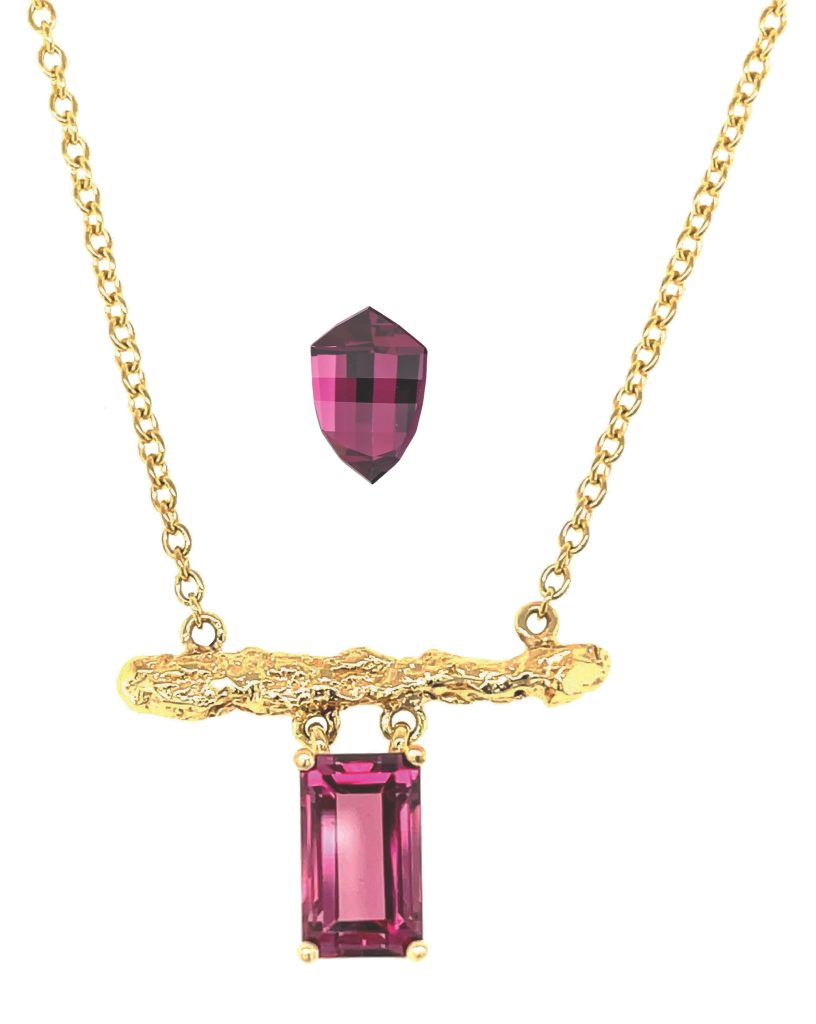
8/11 Necklace featuring a Virtu Gem 2.14-ct Malawi rhodolite set in gold by Susan Wheeler Design. (Photo: Susan Wheeler) Inset: Photograph of the Virtu Gem Malawi National Gem Cut in rhodolite. (Photo: Robert Weldon)
Susan Wheeler, co-founder of Chicago-based Virtu Gems, a not-for-profit initiative to sell gems from artisanal miners in Malawi, Kenya, and Zambia, sources a variety of gemstones, including the garnets of rhodolite, spessartite, tsavorite, and colour change types. “There are two areas where colour change garnet is mined—Kamtonga and Chawia in Kenya,” she explains. She adds that Virtu Gem worked with the government of Malawi to create a national gem cut, unique to that nation, with garnets figuring prominently.
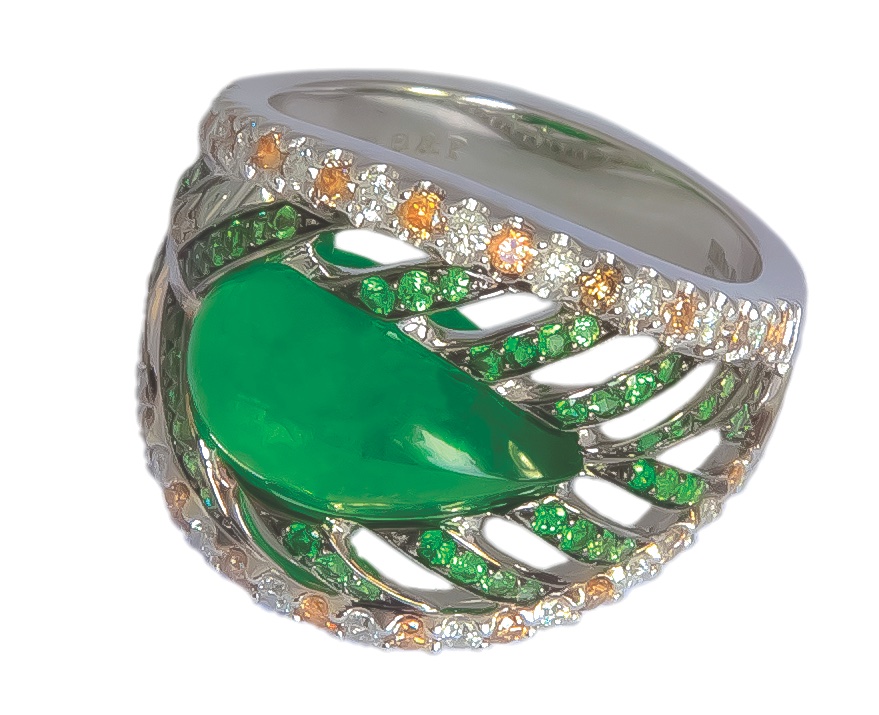
9/11 Green garnet ring (6.01 cts) set in 18K white gold accented with tsavorites and white and brown diamonds by Switzerland-based Elke Berr Joaillerie. (Photo: Berr & Partners)
“In the mineralogically complex and colourful gem family of garnets, star garnets play an important role,” says Martin Steinbach, German gemmologist, asterism expert, and author of Asterism – Gems with a Star and the soon-to-be-released Star Gems – A Fascinating World. “Nearly all star garnets are star almandines. Maybe 10 percent are star rhodolites, while star andradites and star spessartines are very rare,” he adds, explaining that star garnets show stars exhibiting four and six rays as well as a network of stars and sometimes cats eyes.
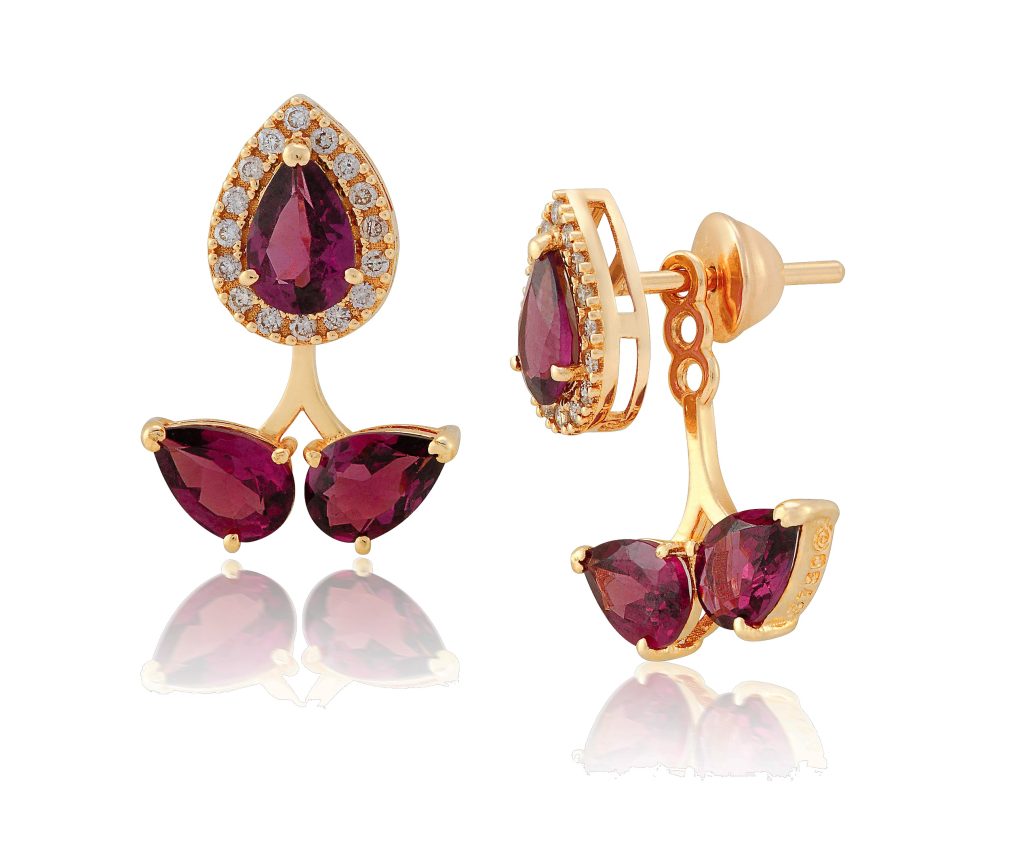
10/11 Pair of rhodolite and diamond earrings in 18K gold by Brazil-based Bruner. (Photo: Bruner)
“The common star almandines come in medium to darker hues of red and are found commercially in Brazil and India, while star rhodolites occur in a violet-red and are found in Tanzania,” Steinbach continues. “Star andradites occur in brown, yellow, red, and dark green and can show an iridescent pattern. They are found in Japan, Mexico and the USA. Star spessartines show several shades of orange and are from Sri Lanka and Tanzania.”
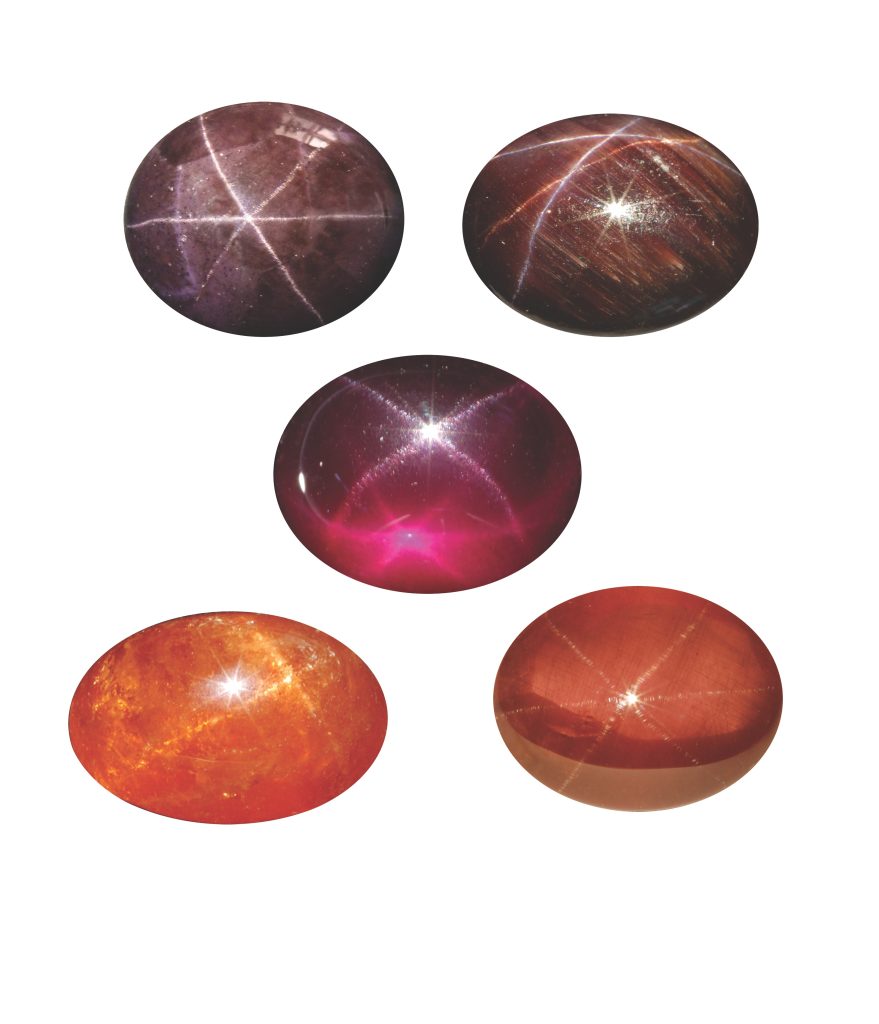
11/11 Selection of star garnets compiled by Martin Steinbach. Top to bottom, left to right: Dark reddish six-rayed 16.69-ct star almandine from India; Four-rayed 19.76-ct star almandine also exhibiting a cat´s eye from Madagascar; Translucent four-rayed 10.05-ct star rhodolite from Tanzania; Very rare four-rayed 37.78-ct star spessartine from Tanzania; Very rare and fine six-rayed 18.15-ct star spessartine from Sri Lanka. (Photos: Martin Steinbach)
With garnet’s rainbow of colours, from the rare green demantoid and tsavorite to the fiery orange of spessartines, to the deep red shades of pyrope and almandine, to the intriguing gems that change colour and the exotic stars, this beautiful gemstone offers something for every taste and budget, making it the perfect birthstone to start the New Year.